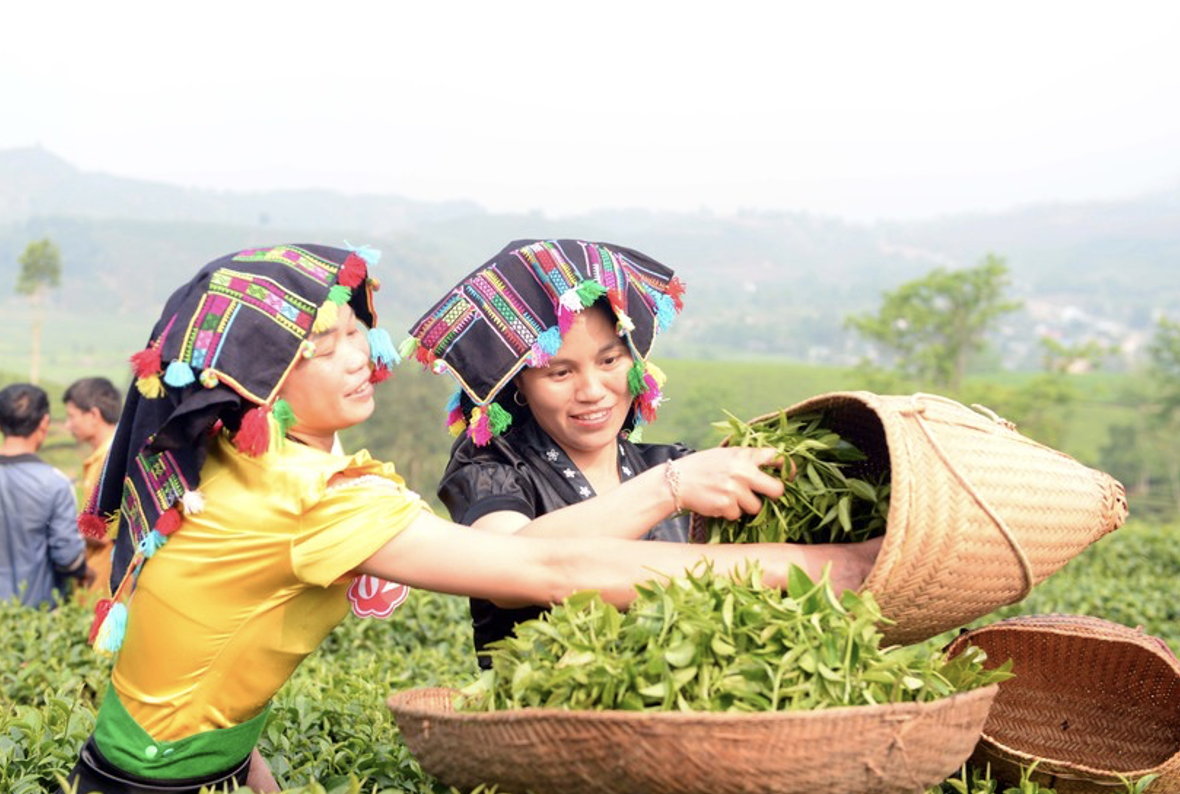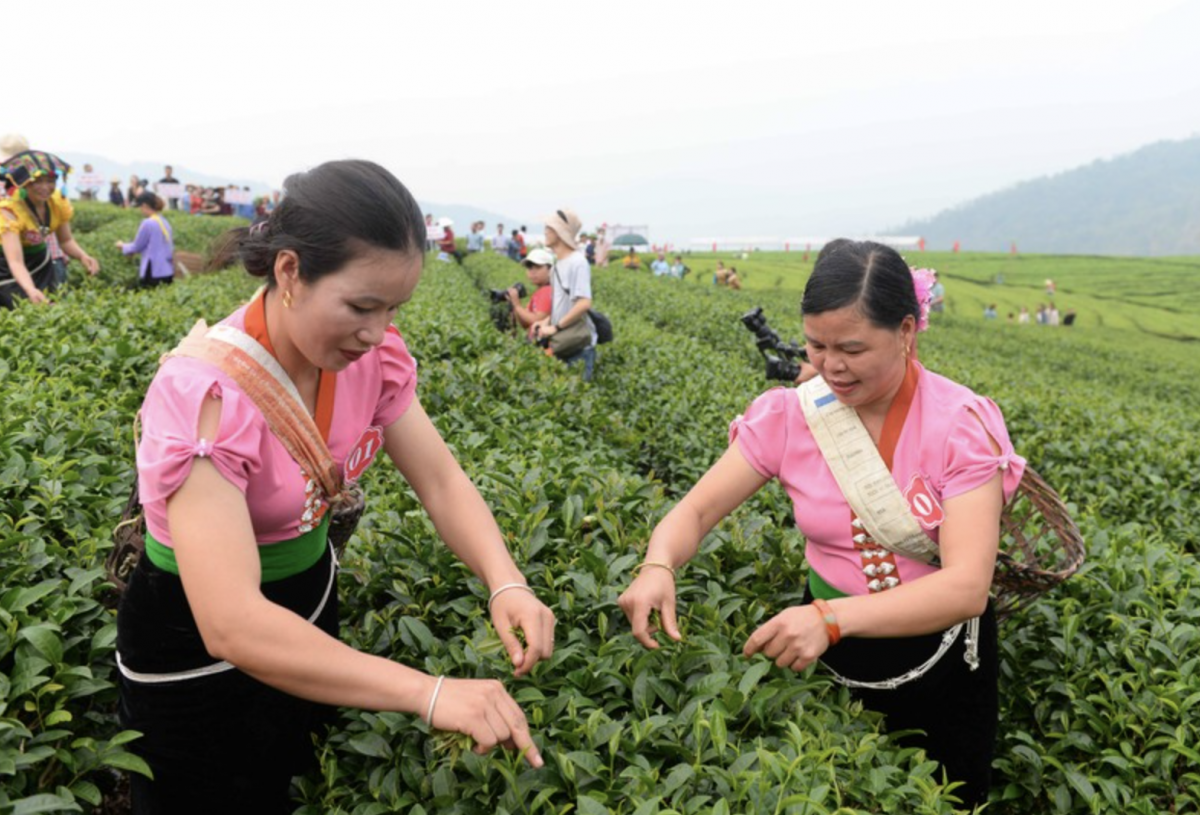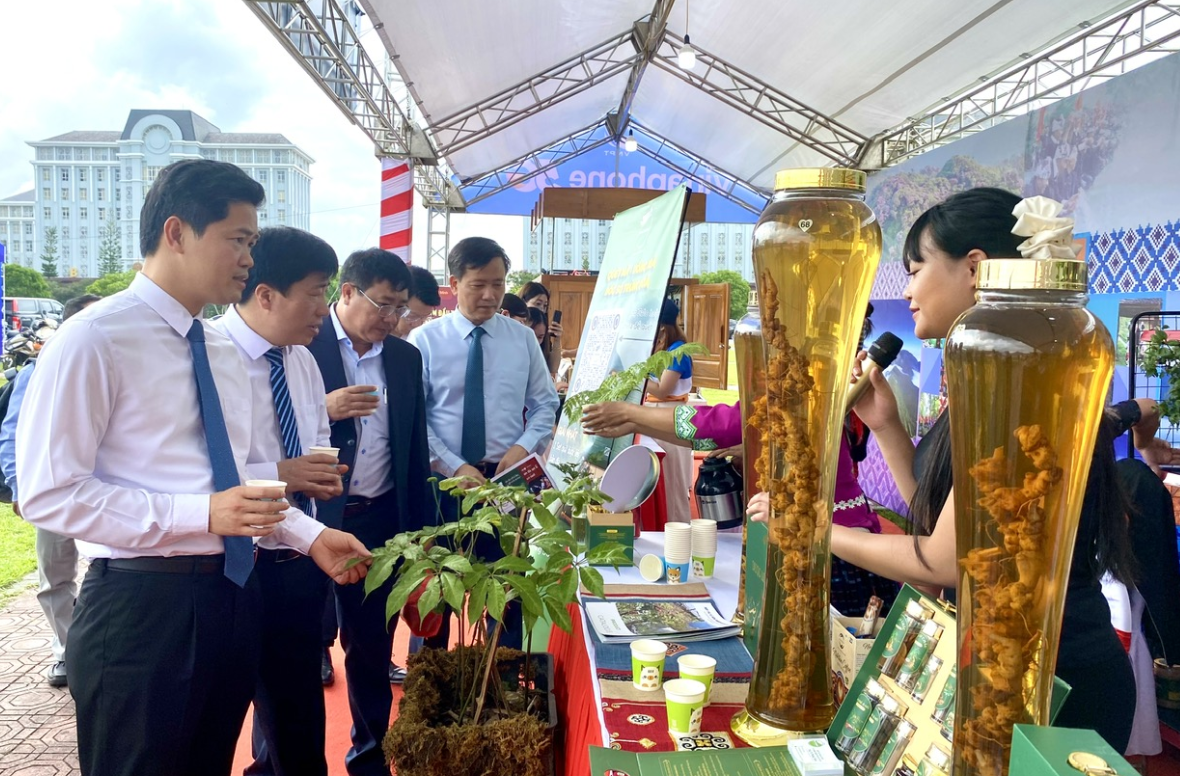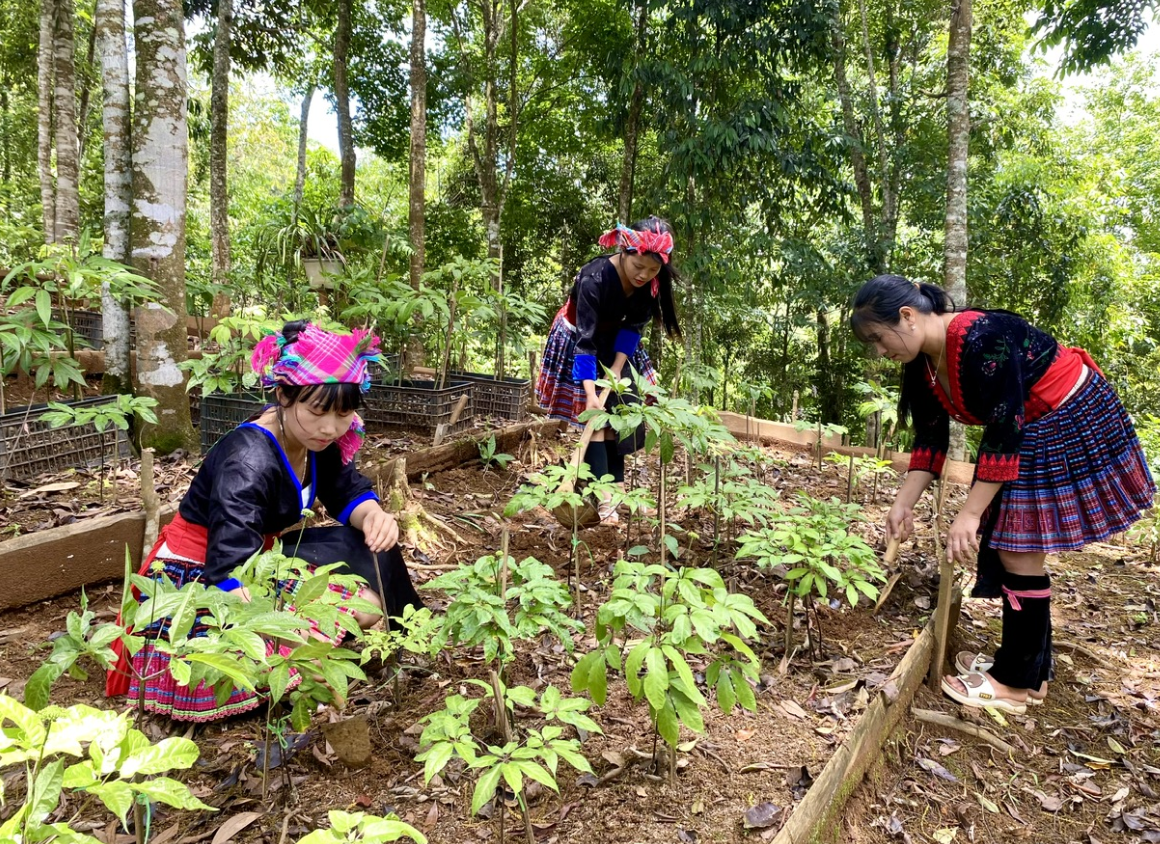
Vietnam to review over 20 years of Resolution 36 on overseas Vietnamese
19:05 | 23/03/2025 16:32 | 23/12/2025News and Events
Hard work behind ‘golden harvests’
Before the sun rises over the Pu Ta Leng peak, Lau Thi Sua from Ta Mit Commune (Sin Ho District) is already hiking up the hill with a woven basket on her back, harvesting Shan Tuyet tea buds. In the misty dawn, the tender green leaves seem to carry the breath of the mountains and the sweat of those who till the slopes.
“This tea tree has been passed down by our ancestors. We used to just pick the leaves and dry them for home use, but now we sell them to cooperatives, with packaging and labels. It feels like sending my child off to the city market in a beautiful outfit,” she laughs.
 |
| In Lai Chau Province where over 87 percent of the population belongs to ethnic minority groups, agriculture is more than a livelihood. Photo: Nguyen Hai |
In Lai Chau Province, where over 87 percent of the population belongs to ethnic minority groups, agriculture is more than a livelihood. From ancient tea trees on Ta Chi Nhu peak to Seng Cu rice fields carved into Tam Duong’s terraced slopes, and macadamia orchards in Than Uyen, every crop bears the imprint of the highland communities who live in harmony with the land.
According to the Lai Chau Department of Agriculture and Environment, by the end of 2024, the province had over 9,300 hectares of tea, 6,600 hectares of macadamia, nearly 11,300 hectares of medicinal herbs, and more than 8,000 hectares of temperate fruit trees, mostly located in remote communes inhabited by ethnic minorities.
In the past, highland farmers simply grew, harvested, and brought their produce to local markets. There was no packaging, no branding, and prices were often forced down to the lowest level. Today, a new generation of cooperatives, led by local people themselves, is paving a new path where ethnic minority communities not only produce, but also standardize, brand, and bring their goods to e-commerce platforms.
 |
| Lai Chau has prioritized investment in region-specific raw material zones: macadamia in Than Uyen (Hmong people), tea in Tan Uyen and Tam Duong (Dao and Thai people). Photo: Nguyen Hai |
Giang Xuan Cuong, a Hmong farmer and director of the My Dao Sin Ho Cooperative, is at the forefront of this agricultural transformation. “When we first started, people were hesitant. But once they saw the professionally packaged goods selling online with traceability labels, more villagers joined. Last year, we sold over 15 tonnes of dried produce, 40 percent of which were sold through online channels,” he shared.
Beyond My Dao, other cooperatives, including Ban Bo Medicinal Herbs (Thai people), Phuc Khoa Tea (Dao people), and Thai Minh Agriculture Company (with members from the Hmong and Lu communities), are also implementing closed-loop production models. These cooperatives receive training in traceability, QR codes, live-stream selling, and more. Highland farmers are becoming entrepreneurs, preserving the forests while connecting their produce to distant markets.
 |
| The journey to build strong brands for highland agricultural products is long and far from easy. |
According to the provincial Department of Industry and Trade, by the end of 2024, more than 300 ethnic minority products had appeared at trade fairs, with over 30 items listed on e-commerce platforms such as TikTok, Shopee, and Facebook. Popular items include Ta Mit turmeric starch, dried persimmons from Sin Ho, and dried bamboo shoots from Nam Nhun, all gaining traction among urban consumers.
Extending policy support to remote villages
In a province where reaching a village still means crossing rivers and forests, policy must go beyond paperwork to reach the people. The transformation of Lai Chau’s agricultural sector stems not only from community efforts, but from policy support extended from central to local levels, reaching every tea hill, maize field, and ethnic household.
The provincial government has embraced a clear vision: agricultural products must be branded, traceable, and tell a story to reach broader markets. The focus is not merely production, but value-chain integration, linking products with markets, digital tools, and regional branding strategies.
The provincial Department of Industry and Trade, for instance, doesn’t stop at issuing guidelines. Officials visit villages, host on-site workshops, train locals in digital skills, assist in traceability systems, and guide farmers in branding and packaging. As a result, Dao, Thai, and Hmong farmers, once wary of paperwork and technology, now scan QR codes, list products online, and livestream their offerings.
 |
| Rather than letting ethnic communities struggle on their own in building livelihoods, Lai Chau’s authorities are steadily translating policy into practical support for highland farmers. Photo: Thanh Hoa |
Vuong The Man, Director of the Lai Chau Provincial Department of Industry and Trade, stated: “We’ve launched multiple programs to bring ethnic minority products into major retail systems in Hanoi and Ho Chi Minh City. At the same time, we developed the laichau.biz e-commerce platform and connected it with other marketplaces to give locals more sales channels.”
Notably, under the national program for socioeconomic development in ethnic and mountainous areas in the 2021–2030 period, Lai Chau has prioritized investment in region-specific raw material zones: macadamia in Than Uyen (Hmong people), tea in Tan Uyen and Tam Duong (Dao and Thai people), and medicinal herbs in Sin Ho (Ha Nhi and Lu people). Each area is not only a production hub, but also a cultural and agro-tourism landmark, supporting the livelihoods of tens of thousands of ethnic households.
Building brands, opening global markets
The journey to build strong brands for highland agricultural products is long and far from easy. Yet it is the ethnic minority communities themselves who are laying the foundations through authenticity, cultural identity, and their deep-rooted connection to the land and its produce.
 |
| To date, Lai Chau has developed nearly 140 OCOP (One Commune One Product)-certified items, including 17 rated four stars or higher, most of which originate from highland areas. Photo: Thanh Hoa |
To date, Lai Chau has developed nearly 140 OCOP (One Commune One Product)-certified items, including 17 rated four stars or higher, most of which originate from highland areas. Signature items such as Tan Uyen tea, Seng Cu rice from Tam Duong, and Than Uyen macadamia nuts have been featured in key trade promotion programs led by the Ministry of Industry and Trade. Several batches of tea and macadamia products have been exported to Japan, China, and Chinese Taipei.
Importantly, highland farmers are not only cultivating crops, they are learning to tell their own stories through every product. These stories are not flashy, but authentic, and that authenticity resonates with consumers.
While new stories are being told, local communities still need support from the government, businesses, and consumers. Above all, they deserve to be recognized for who they truly are: Resilient protagonists of the very land where they were born, shouldering the future of highland agriculture with tireless efforts and an unwavering aspiration to rise.
Rather than letting ethnic communities struggle on their own in building livelihoods, Lai Chau’s authorities are steadily translating policy into practical support for highland farmers. From resolutions supporting access to land, seeds, and livestock for ethnic minorities; to models assigning officials to guide each household or production group, every policy is designed to be practical and accessible. Provincial departments actively integrate local material zones into national target programs, while organizing workshops, training courses, and livestream sales sessions to support ethnic producers. Notably, the development of the e-commerce platform laichau.biz, linked with major digital marketplaces, has opened up a new path, helping highland products reach broader markets. |

19:05 | 23/03/2025 16:32 | 23/12/2025News and Events

19:05 | 23/03/2025 16:30 | 23/12/2025Trade

19:05 | 23/03/2025 23:26 | 22/12/2025Industry

19:05 | 23/03/2025 23:19 | 22/12/2025News and Events

19:05 | 23/03/2025 14:41 | 22/12/2025News and Events